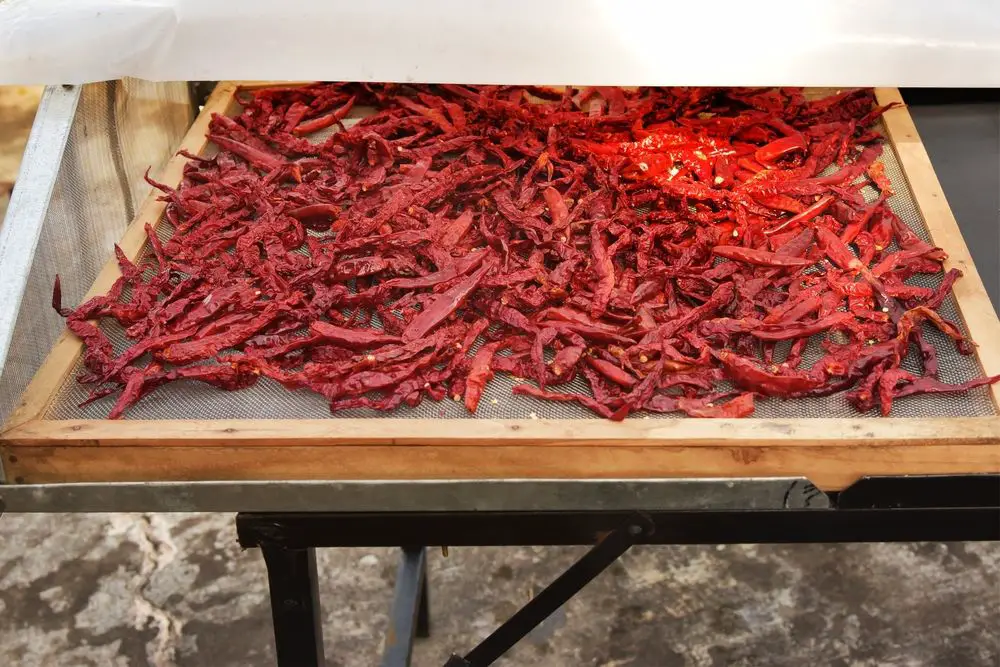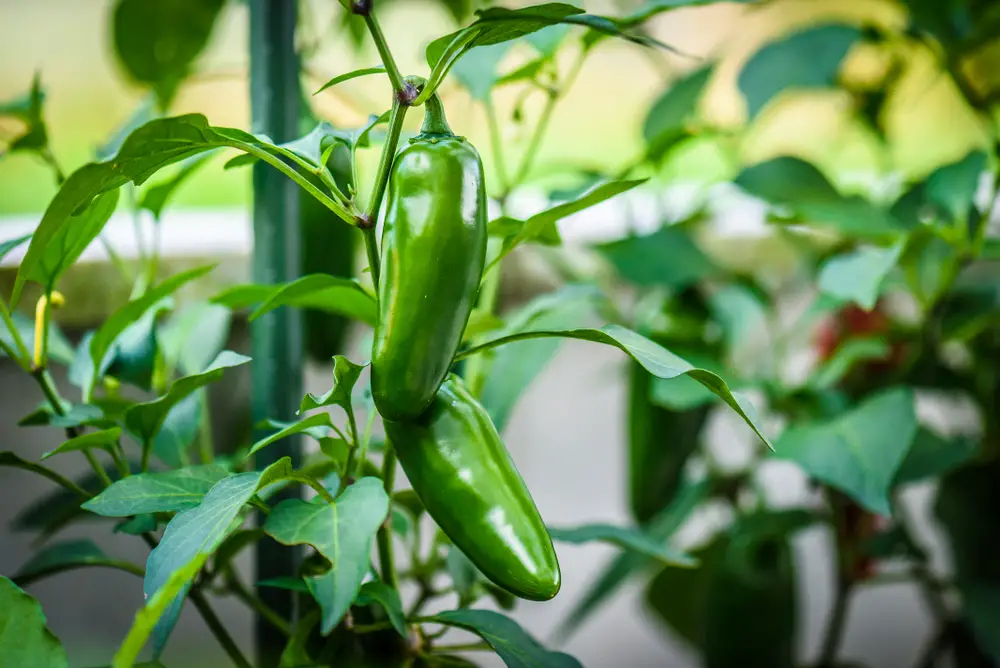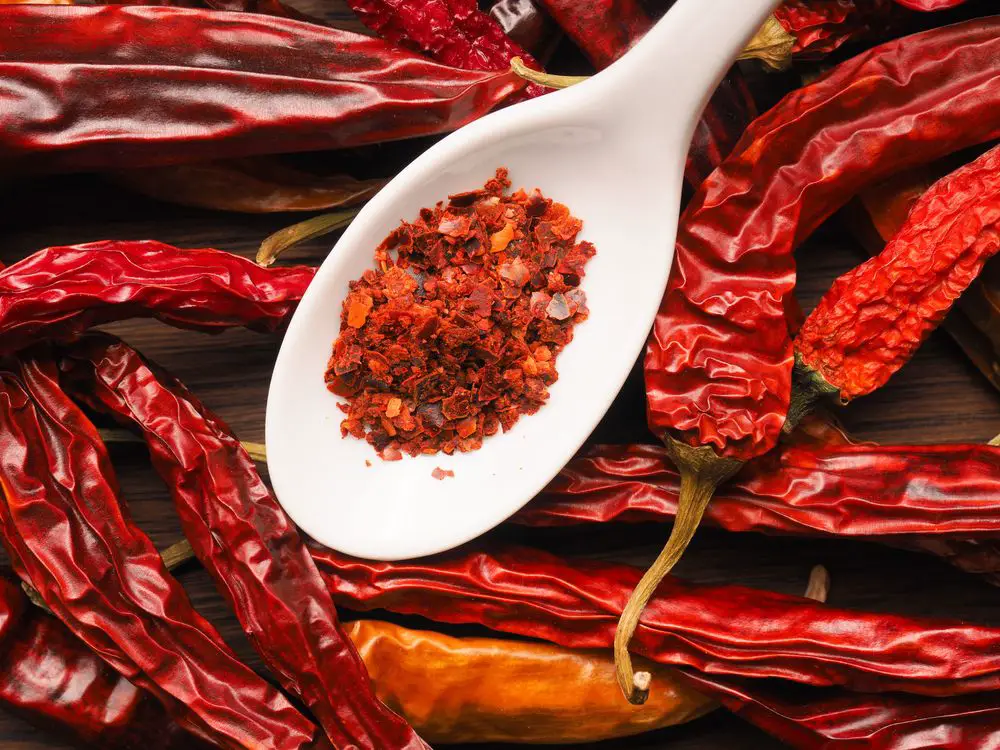Dehydrating jalapeno peppers is an excellent method of preserving freshly harvested peppers.
To dehydrate Jalapeno: glove up and examine them, wash your peppers and set them aside, remove seeds from your jalapenos, place jalapenos in the dehydrator tray, adjust temperature of your dehydrator to proper setting, leave for a period of six hours, keep them for later use.
Step By Step Guide on How to Dehydrate Jalapenos
Just so you know, before we get into the step-by-step guide for dehydrating Jalapeno peppers, it’s important to point out that there are a variety of methods you can use to accomplish this.
Prepare your peppers for dehydration in a variety of ways. You can chop them or leave them whole, depending on your preference and availability.
It is possible to dehydrate your Jalapeno peppers using three different methods, each of which is described below.
They are to be dried in your electric dehydrator, in your oven, or by the old-fashioned method of hanging them to dry in the air. Different approaches will be more appropriate depending on your circumstances.
If you already have a dehydrator, this will be the quickest and most convenient method for you. However, you are not required to purchase a dehydrator solely to dehydrate your Jalapenos. If you don’t have access to a dehydrator but do have access to an oven, you could instead opt to use this method to dry your fruits and vegetables.
There are, however, several risks associated with using this technique. If that doesn’t work, you could try air-drying your Jalapenos, which has been proven to be effective for hundreds of years.
However, this method is significantly more time-consuming and is not recommended if you live in a particularly humid climate.
The final step is to carefully consider all of your options and select the one that is most appropriate for you.
So, once you’ve decided which method is the best fit for you, keep reading to learn how to implement that method effectively.

Using a Dehydrator to Dehydrate Jalapeno Peppers
First, let’s take a look at how you can dehydrate your Jalapeno peppers using a dehydrator to make them more flavorful. While there are more traditional methods available, using a dehydrator is by far the most convenient option for most people.
Consequently, if you have the necessary space and funds, and you anticipate dehydrating many Jalapenos, it is recommended that you purchase a dehydrator.
Yes, when you already have an oven at home, the initial cost can feel like a bit of a slap in the face. While there is no risk of your Jalapenos cooking if you use a dehydrator, there is an extremely high risk of this happening if you use your oven to cook them.
If you have access to a dehydrator, the process is straightforward. However, to assist you, we’ve put together this handy step-by-step guide to assist you.
Follow These Steps If You Want to Dehydrate Your Jalapenos To Make Them More Flavorful.
Step 1: Examine Your Jalapeno
Put on your plastic or rubber gloves.
As previously stated, you will end up with many Jalapenos; therefore, only the best ones should be dehydrated.
If you want to find the best Jalapenos, you should go through your peppers and look for mold, rot, or holes in their bodies. You should discard any Jalapenos that aren’t perfectly ripe, leaving you with a pile of top-quality Jalapenos that are ready to be dehydrated.
Step 2: Wash Your Peppers and Set Them Aside
When handling any fresh fruit or vegetable, you should always wash your hands before touching them. The same can be said for jalapenos. As a result, before continuing, thoroughly wash your peppers.
You should wash the peppers in cold water and then thoroughly dry them, making sure that there is no water left on the surface of the peppers after they have been dried.
This will only increase the amount of time it takes for them to dry out.
Step 3: Remove the Seeds from Your Jalapenos
You should begin chopping your Jalapenos after they have been allowed to dry for several hours. You most likely already have some experience with chopping Jalapenos, but just in case you don’t, we’ll show you how to prepare them in this article.
Starting with the pepper, remove the stem and cut it into the desired shape. After that, chop the peppers in the desired shape. When it comes to jalapenos, the most common cut is horizontal.
It is also preferable to use a thinner cut of peppers rather than a thicker cut if you want your peppers to dry more quickly.
Even if you decide to dry your Jalapenos whole, you should still make some shallow cuts into the pepper’s skin to aid in the dehydration process, as this will help to speed up the dehydration process.
Step 4: Place your Jalapenos in the Dehydrator Tray
All dehydrators will come with trays on which you will need to spread out whatever you want to dry before using them. Ensure that you leave a good-sized gap between each pepper slice as you lay all of your pepper slices flat across the baking tray.
None of your slices must touch one another when you place the tray in the dehydrator, as this will likely cause them to stick together during the drying process.
Step 5: Adjust the Temperature of Your Dehydrator to the Proper Setting
After you have prepared your Jalapenos, you can begin setting the temperature of your dehydrator to the desired level.
We recommend using a temperature of 125 degrees Fahrenheit (75 degrees Fahrenheit) because this is the ideal temperature for drying peppers without cooking them completely.
Step 6: Leave It for a Period of Six Hours
When you have turned on your dehydrator, you have accomplished the majority of your task.
The amount of time it will take for your Jalapenos to dehydrate will be entirely dependent on how thickly you chopped them in the first place. It will, however, always take at least 6 hours for your Jalapenos to dry out, based on our previous experience. Even if you cut them into very thin slices.
For those who prefer a thicker cut or who dehydrate their peppers whole, it may take up to 10 hours for them to dry out completely.
It is also a matter of personal preference as to the level of dehydration that you desire. You might prefer your Jalapenos slightly underdone, or you might prefer them to be extremely crunchy.
In this case, you should keep an eye on your Jalapenos throughout the drying process so that you can remove them from the dehydrator when they have reached the desired consistency.
You might also be preparing your Jalapenos for pepper powder by drying them. You should dehydrate your peppers until they are completely brittle in this case, as this is the state in which it is easiest to grind them into a powder.
Step 7: Keep Them for Later Usage
Finally, you must ensure that your dehydrated Jalapenos are stored in the proper conditions. Most people choose to store their Jalapenos in either freezer bags, an airtight container, or mason jars until they are ready to use them in a recipe.
Using an Oven in Dehydrating Jalapenos
Among spicy peppers, jalapenos are the most widely used in North America. They are well-known for having thick walls, like bell peppers, while also having moderate heat levels that are suitable for most people.
Besides that, they are simple to grow at home, either in containers or directly in the ground.
Many peppers are produced when jalapenos are grown in their natural environment. It is at this point that dehydrating jalapeno comes in useful.

It is necessary to remove the moisture from the pepper before dehydrating it (or any pepper for that matter).
There are numerous methods for accomplishing this, ranging from simply leaving the peppers out in a well-ventilated room to using a dehydrator designed specifically for this purpose.
Alternatively, if you decide that you would prefer to dehydrate your peppers in the oven, that is perfectly acceptable. In terms of dehydrating Jalapenos, the oven is the second-best option after a dehydrator.
Let’s take a look at how you might use this common household appliance to dry out your peppers. Whenever possible, it is best to dehydrate your peppers in a convection oven to ensure the best results.
Because many of the steps for dehydrating your Jalapenos in the oven are the same as those for dehydrating them in the dehydrator, we won’t go into great detail about them.
The peppers, on the other hand, will need to be washed and dried before anything else can be done.
After that, you can prepare them and cut them into the shape and thickness that you desire.
Next, take an oven-safe drying rack and arrange your Jalapenos along with the tray, making sure that none of them are touching or touching each other. Prepare them in the same manner as you would for the dehydrator.
After you have completed all of the preparation work, you should preheat your oven to the lowest temperature it will tolerate.
Therefore dehydrators have an advantage over other methods because they can be programmed to the ideal temperature.
Most ovens, on the other hand, have a minimum temperature of 150 degrees Fahrenheit, which is 25 degrees higher than the ideal temperature for baking.
You must, however, make do with what you have at your disposal. As a result, if you are unable to set your oven to 125 degrees, the next lowest temperature should suffice.
Everything else is as simple as placing your tray of Jalapenos in the oven. Depending on how cold your room is, it could take anywhere from 4 to 12 hours for the Jalapenos to dry out completely. As a result, it is critical that you inspect the peppers regularly.
Once every 4 hours after that, and then at regular intervals after that. When your peppers have reached the texture you desire, remove them from the oven and store them in an airtight container for future use or consumption.
Dehydrating Jalapenos with the Use of Air Drying
It is common for some people to stick to the basics when it comes to cooking. Human beings have been cooking for thousands of years, and numerous methods have been tried and tested and have proven to be effective.
You could argue that they aren’t modern or that they don’t employ cutting-edge technology, but as the saying goes, don’t try to fix something that isn’t broken.
If you live by this motto, you might consider allowing your Jalapenos to air dry before using them. This isn’t the most efficient method of dehydrating them, but it does the job. As a result, let’s take a look at how you might go about it.
But, before we get into that, we feel it is necessary to provide a brief disclaimer about the dangers of air drying. Although it is the traditional method, air drying is significantly more time-consuming and is not always as effective.
The use of air drying is not recommended for areas with high humidity levels, as previously stated. As a result, while you may want to use the traditional method, you should seriously consider whether or not it will be effective before proceeding.
There are two methods for drying jalapenos in the air: the traditional method and the modern technique. Examine the procedure to see how it works.
Final Thoughts – How to Dehydrate Jalapenos: Step by step Guide
In summary, this article has provided a comprehensive guide to dehydrating Jalapenos, including instructions on how to do so using a dehydrator, an oven, and air drying.
Once dehydrated, jalapenos are usually safe to consume for up to one year after being dehydrated. If they are stored in an airtight container away from direct sunlight and in a cool environment, they will last for a long time.
While a year is usually sufficient time for you to enjoy your Jalapenos, if you want to extend their shelf life even further, you should consider pickling or freezing them instead.
However, in most cases, dehydrating Jalapenos will be a perfectly effective and safe method of extending the shelf life of your Jalapenos so that you can continue to enjoy them.

